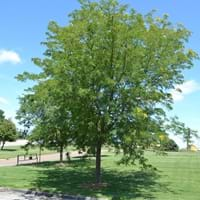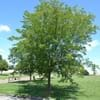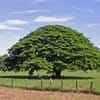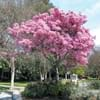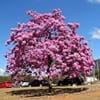Life Span
Annual
Perennial
Type
Tree
Bulb or Corm or Tuber
Origin
Northeastern United States, Southeastern United States, North-Central United States, Central United States, South-Central United States, Canada
Mediterranean, Turkey
Habitat
Hills, Woods
Lawn, meadows, Sunny Edge, Woodland Garden
USDA Hardiness Zone
3-9
6-9
Sunset Zone
1a, 1b, 2a, 2b, 3a, 3b, 4, 5, 6, 7, 8, 9, 10, 11, 12, 13, 14, 15, 16, 18, 19, 20
21,22
Habit
Upright/Erect
Clump-Forming
Minimum Height
Not Available
Minimum Width
Not Available
Flower Color
Yellow green
Fuchsia, Rose
Flower Color Modifier
Bicolor
Bicolor
Fruit Color
Red, Brown
Not Available
Leaf Color in Spring
Light Green
Green
Leaf Color in Summer
Green, Light Green, Chartreuse, Dark Green, Yellow green
Light Green
Leaf Color in Fall
Light Yellow
Several shades of Green
Leaf Color in Winter
Not Available
Light Green
Leaf Shape
Oblong or Lanceolate
Long Broad
Plant Season
Summer
Spring, Fall
Sunlight
Full Sun
Full Sun, Partial Sun
The pH of Soil
Acidic, Neutral, Alkaline
Acidic, Neutral
Soil Drainage
Well drained
Well drained
Bloom Time
Late Spring
Late Summer, Early Fall
Where to Plant?
Ground
Container, Ground, Pot
How to Plant?
Seedlings
Corms or bulbs, Seedlings
Plant Maintenance
Medium
Low
Watering Requirements
Medium
Do Not over Water, Keep the ground moist but not water-logged
In Summer
Lots of watering
Lots of watering
In Spring
Moderate
Moderate
In Winter
Average Water
Average Water
Soil pH
Acidic, Neutral, Alkaline
Acidic, Neutral
Soil Drainage Capacity
Well drained
Well drained
Sun Exposure
Full Sun
Full Sun, Partial Sun
Pruning
Remove damaged leaves, Remove dead branches, Remove dead leaves
Cut or pinch the stems, Remove damaged leaves, Remove dead flowers, Remove dead leaves
Fertilizers
All-Purpose Liquid Fertilizer
All-Purpose Liquid Fertilizer, fertilize in summer
Pests and Diseases
Red blotch
Slugs
Plant Tolerance
Drought
Drought
Flowers
Insignificant
Showy
Flower Petal Number
Single
Single
Foliage Texture
Fine
Coarse
Foliage Sheen
Matte
Not Available
Attracts
Not Available
Bees, Butterflies
Allergy
Not Available
poisonous if ingested, Toxic if not prepared properly
Aesthetic Uses
Landscape Designing, Showy Purposes
Beautification, Cottage Garden, Showy Purposes
Beauty Benefits
Not Available
Removes pimples
Environmental Uses
Air purification
Air purification
Medicinal Uses
Antiseptic, cathartic, Cough, Indigestion
Arthritis, Gout, Itching
Part of Plant Used
Leaves, Seeds, Wood
Bulbs, Flowers, Seeds
Other Uses
Animal Feed, Roasted seed is used as a coffee substitute, Used as Ornamental plant, Used for making wood alcohol, Wood is used in construction
Used as Ornamental plant, Used for its medicinal properties
Used As Indoor Plant
No
No
Used As Outdoor Plant
Yes
Yes
Garden Design
Feature Plant, Shade Trees, Street Trees
Alpine, Container, Mixed Border, Rock Garden / Wall
Botanical Name
GLEDITSIA triacanthos f. inermis
Colchicum autumnale
Common Name
Thornless Honeylocust
Autumn Crocus, meadow saffron, naked lady
In Hindi
thornless honeylocust
शरद ऋतु का पौधा
In German
thornless honeylocust
Herbstzeitlose
In French
thornless Honeylocust
colchique d'automne
In Spanish
honeylocust sin espinas
cólquico
In Greek
thornless honeylocust
φθινόπωρο κρόκος
In Portuguese
honeylocust thornless
aftomn gema
In Polish
thornless honeylocust
aftomn żółtka
In Latin
thornless honeylocust
aftomn vitellus
Phylum
Tracheophyta
Magnoliophyta
Class
Magnoliopsida
Liliopsida
Family
Fabaceae
Liliaceae
Genus
Gleditsia
Colchicum
Clade
Angiosperms, Eudicots, Rosids
Angiosperms, Monocots
Tribe
Not Available
Colchiceae
Subfamily
Not Available
Not Available
Number of Species
Not Available
Season and Care of Thornless Honeylocust and Autumn Crocus
Season and care of Thornless Honeylocust and Autumn Crocus is important to know. While considering everything about Thornless Honeylocust and Autumn Crocus Care, growing season is an essential factor. Thornless Honeylocust season is Summer and Autumn Crocus season is Summer. The type of soil for Thornless Honeylocust is Loam and for Autumn Crocus is Loam while the PH of soil for Thornless Honeylocust is Acidic, Neutral, Alkaline and for Autumn Crocus is Acidic, Neutral.
Thornless Honeylocust and Autumn Crocus Physical Information
Thornless Honeylocust and Autumn Crocus physical information is very important for comparison. Thornless Honeylocust height is Not Available and width Not Available whereas Autumn Crocus height is 7.60 cm and width 7.60 cm. The color specification of Thornless Honeylocust and Autumn Crocus are as follows:
Thornless Honeylocust flower color: Yellow green
Thornless Honeylocust leaf color: Light Green
Autumn Crocus flower color: Fuchsia and Rose
- Autumn Crocus leaf color: Green
Care of Thornless Honeylocust and Autumn Crocus
Care of Thornless Honeylocust and Autumn Crocus include pruning, fertilizers, watering etc. Thornless Honeylocust pruning is done Remove damaged leaves, Remove dead branches and Remove dead leaves and Autumn Crocus pruning is done Cut or pinch the stems, Remove damaged leaves, Remove dead flowers and Remove dead leaves. In summer Thornless Honeylocust needs Lots of watering and in winter, it needs Average Water. Whereas, in summer Autumn Crocus needs Lots of watering and in winter, it needs Average Water.
